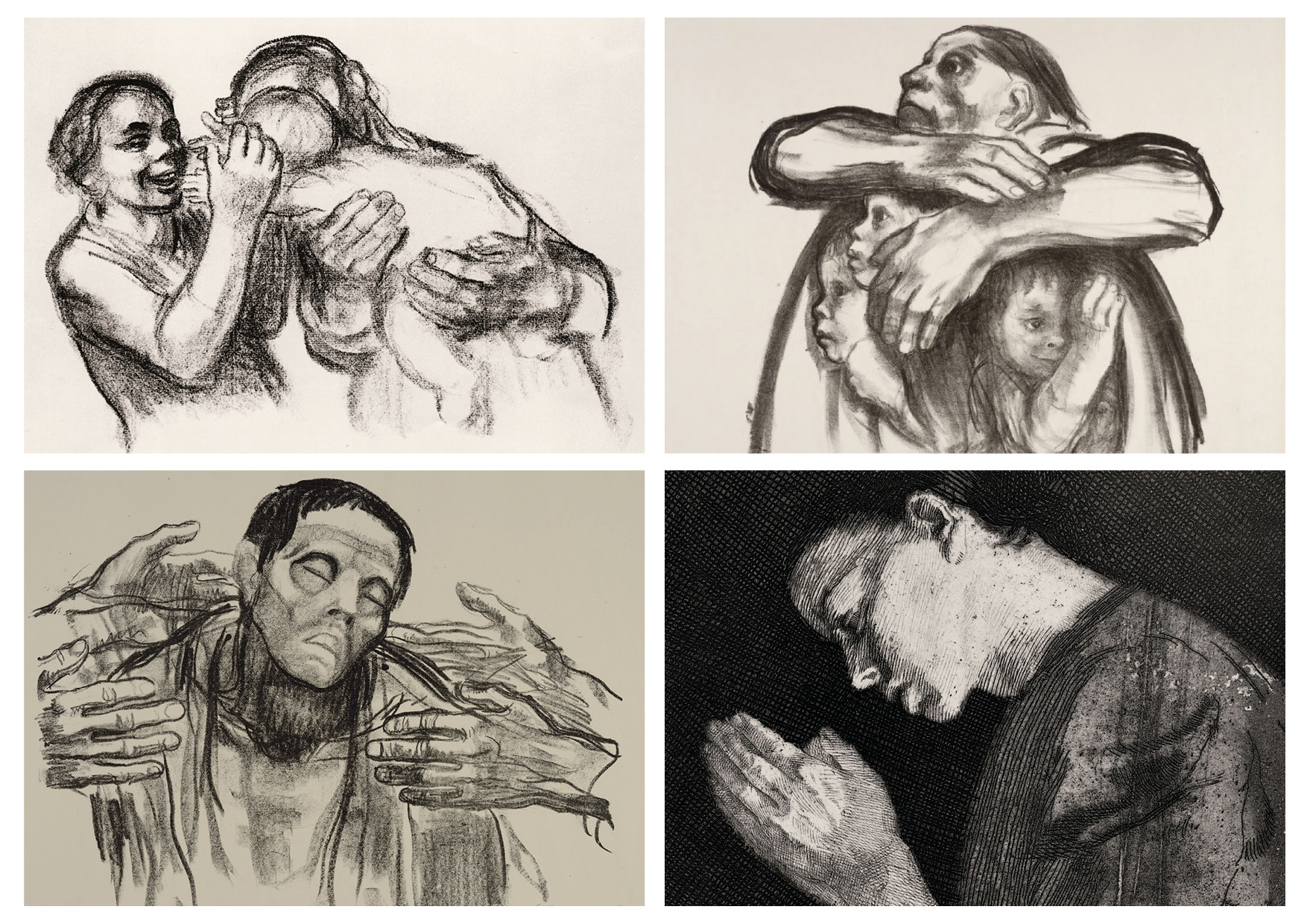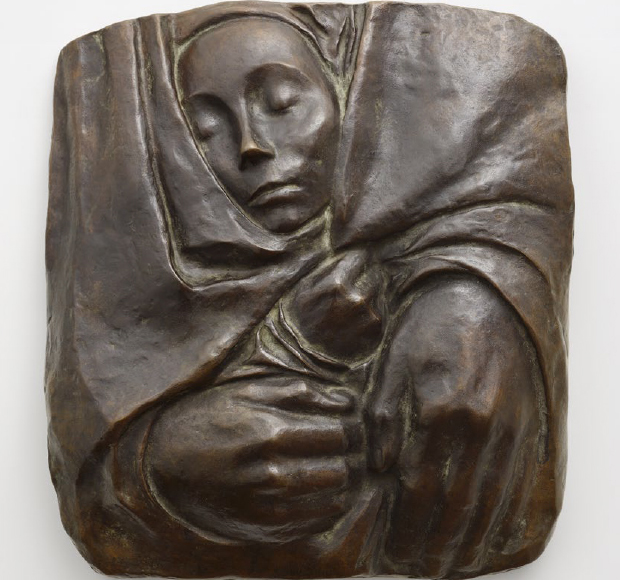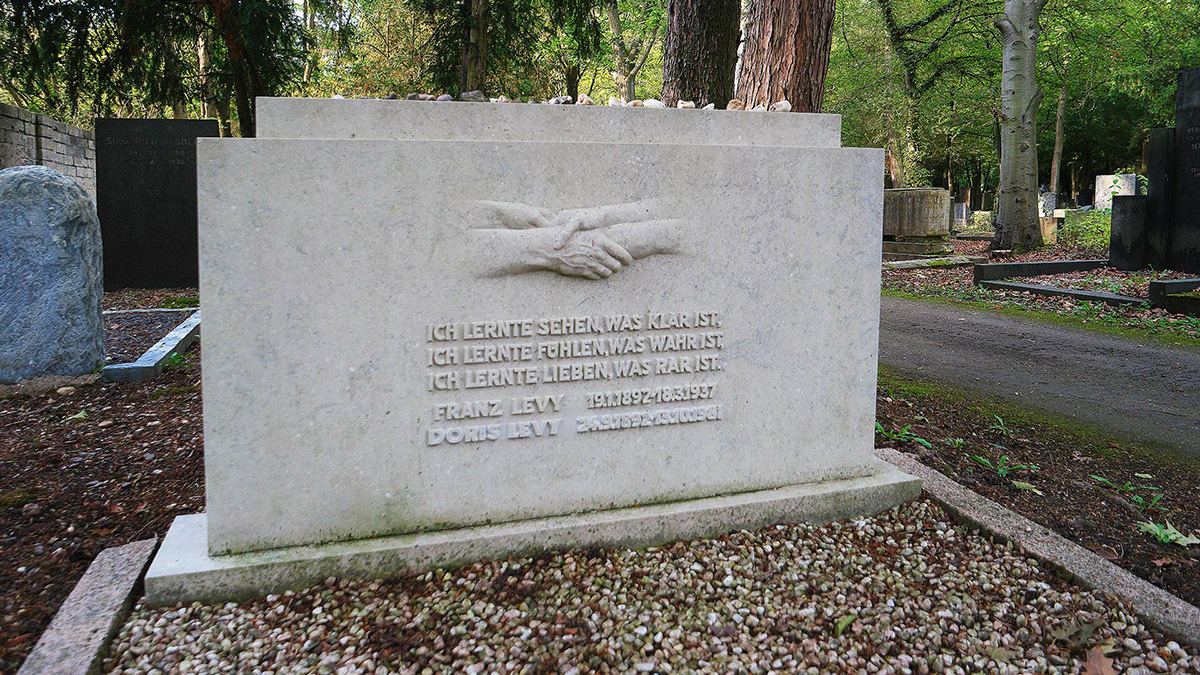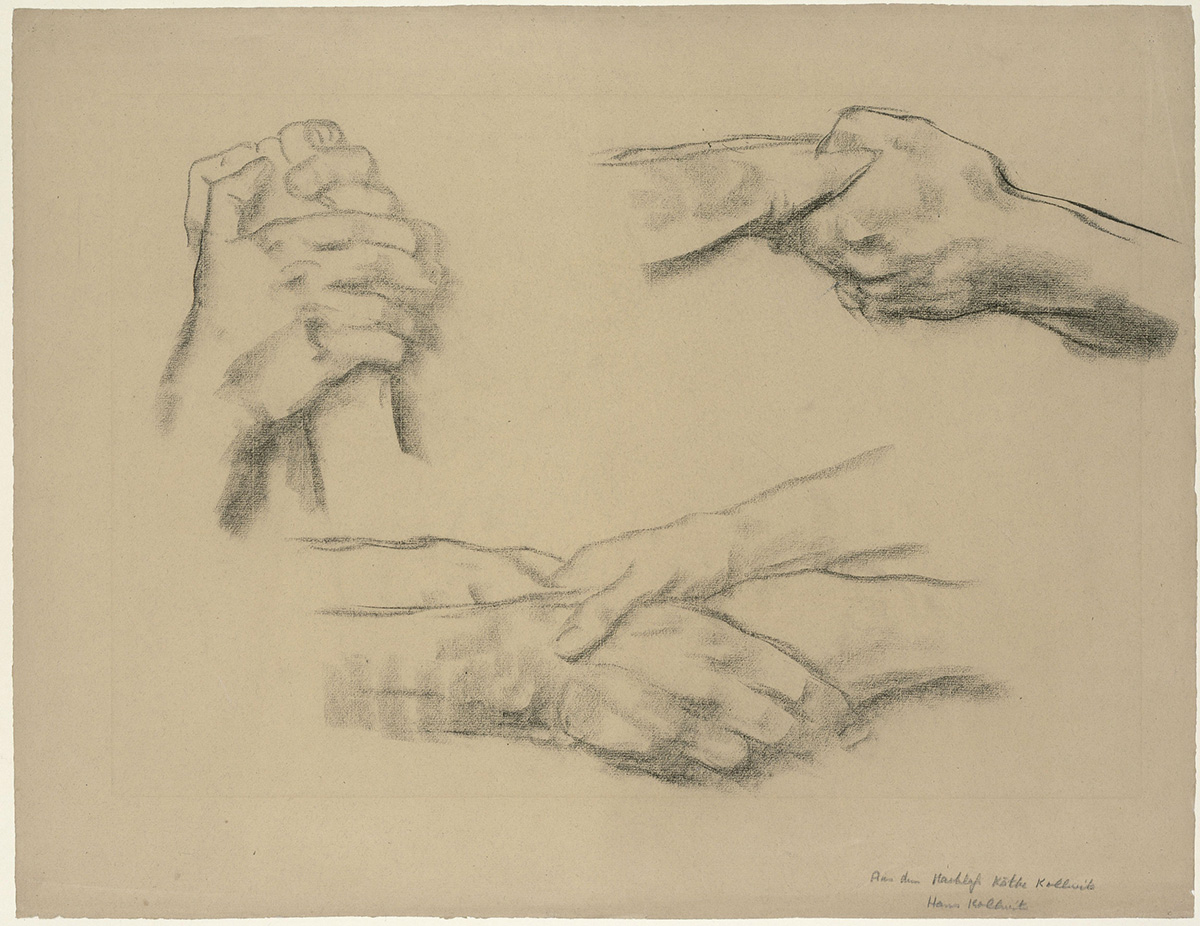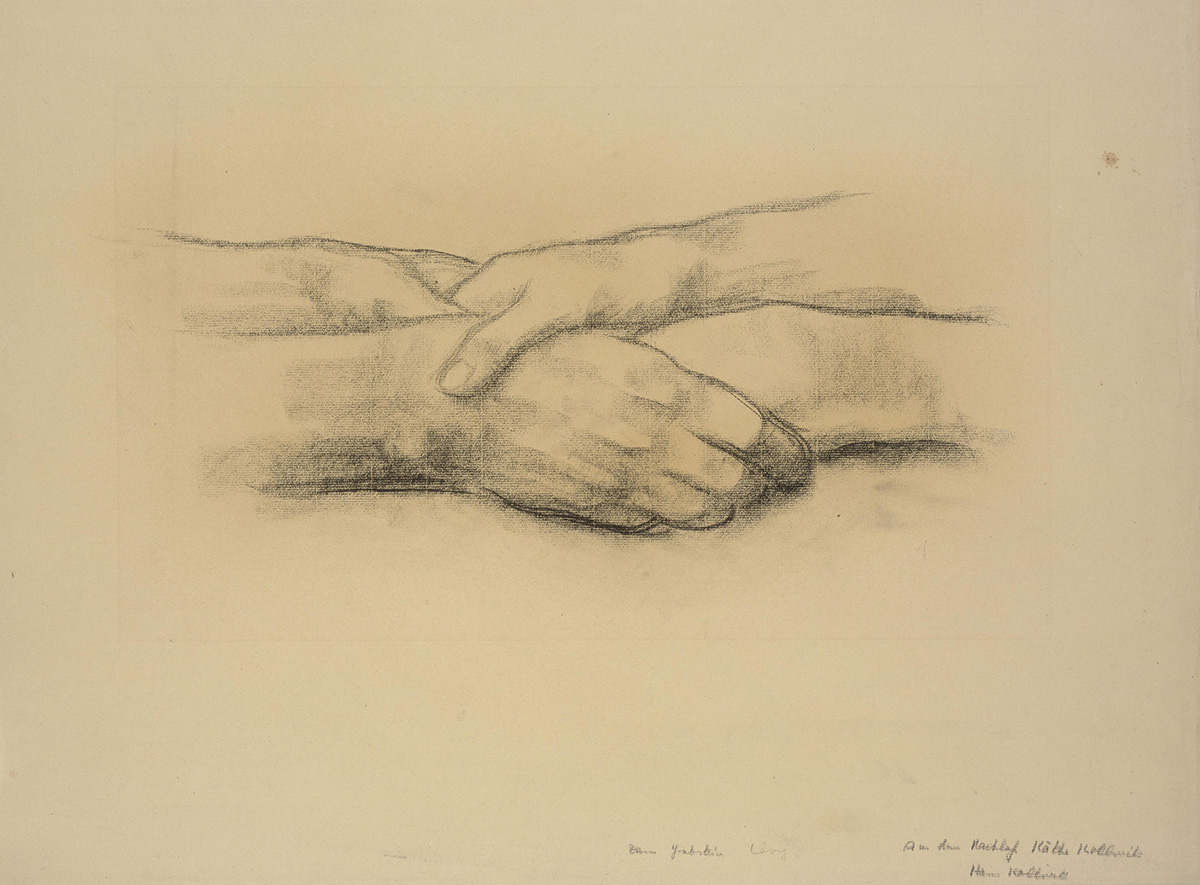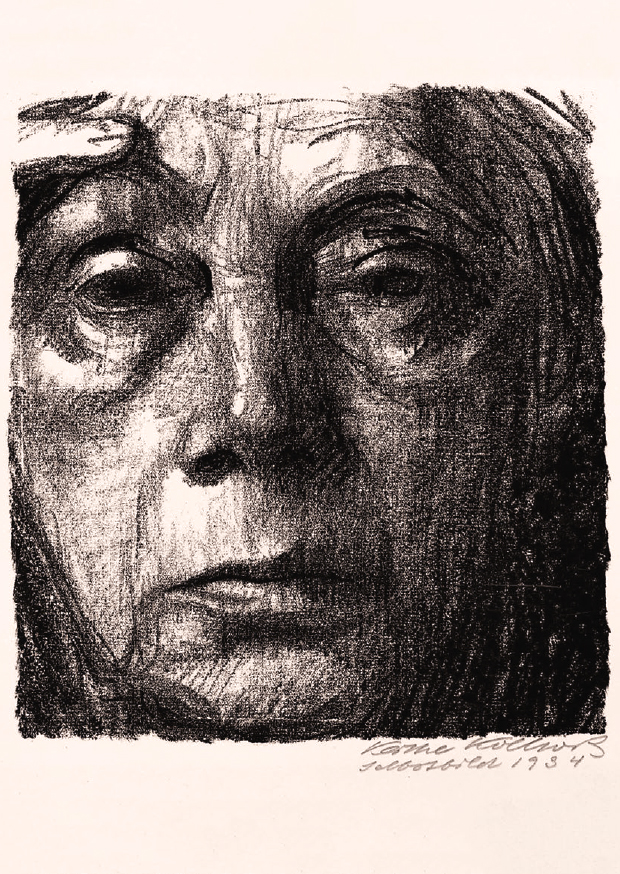
On 22 April 1945, Käthe Kollwitz died at the age of 77 in Moritzburg near Dresden. In the “Rüdenhof”, a manor house on the castle pond of Moritzburg, she found refuge from the war and spent the last months before her death there.
In the end, her eyesight and physical strength were no longer sufficient for her to work artistically. But her own death did not frighten her. In December 1942, months before her evacuation from Berlin, she wrote in her diary: “To be dead, oh yes, that is often a good thought for me.”
Her eventful life was accompanied by significant changes of times: The Empire, the First World War, in which she lost her son Peter, the Weimar Republic, National Socialism and the Second World War, in which her grandson Peter (named after his uncle) was killed.
Käthe Kollwitz, who lived and worked in Berlin for most of her life, left behind an extensive body of work in which one motif appears again and again: the hand. The artist used it as an emotional pictorial element. In her touching works, the hands tell of great feelings: Pensiveness, resignation, grief, loss and endless suffering. Not infrequently they cover the face and are depicted excessively large – this gives the hands a special status in her oeuvre and makes them memorable.
In the Jewish Cemetery Cologne-Bocklemünd there is an impressive sculptural work by Käthe Kollwitz in which the image motif consists only of “grasping hands”. It is the grave relief of the Jewish merchant Franz Levy, who died on 18 March 1937. At a time when the artist no longer had the opportunity to exhibit her work in National Socialist Germany, she was commissioned by the widow Doris Levy to design her late husband’s tomb relief. Shortly before, Kollwitz had created the bronze relief “Rest in the Peace of His Hands” for her own family grave.
Now Käthe Kollwitz designed a simple tombstone of white marble, from whose smooth surface “grasping hands” stand out impressively. About the commission and the motif Kollwitz wrote:
“A Jewish woman, Mrs Levy from Cologne, wants me to make a gravestone work for her deceased husband. Only hands – four clasping hands – as any other human representation is forbidden on Jewish gravestones. I have to do the work in July. Bursch in Hamburg is carrying it out.” (Käthe Kollwitz, diary, June 1938)
Since hands play a significant role in Käthe Kollwitz’s work, her choice of motif cannot be justified solely on the basis of Jewish tradition. The hands symbolise the love of two spouses, they show a moment of holding and saying goodbye. Kollwitz later wrote to her patron:
“I enjoyed working on it very much and hoped that the indissoluble feeling of togetherness was really expressed.” (Käthe Kollwitz, letter to Doris Levy, 30 June 1939)
The artist approached the final version in several drawing versions and made first a clay, later a plaster model.
Museum of Prints and Drawings. (2021-11-02). NG
27/64-108: Hands grasping each other.
Study on the tomb of Franz Levy.
Retrieved from https://nat.museum-digital.de/object/582243
Museum of Prints and Drawings. (2021-11-02). NG
27/64-18: Hands grasping each other.
Study on the tomb of Franz Levy.
Retrieved from https://smb.museum-digital.de/object/93548
In view of the fact that the tomb was created for a Jewish couple who were persecuted under the Nazi regime, the motif of the “clasping hands” can certainly also be understood as a sign of Kollwitz’s solidarity with the Levy family. In December 1938, with regard to the pogrom of 9 November, she wrote to Doris Levy:
“I have thought of you repeatedly, dear Mrs Levy, not only to the gravesite went my thoughts, but to you. Believe me, we all suffered together and deeply. Pain and shame we feel. And indignation.” (Käthe Kollwitz, letter to Doris Levy, 15 December 1938)
Franz Levy was a former board member of the Cologne department stores’ group Leonhard Tietz AG (since 1933 Westdeutsche Kaufhof AG). Due to his Jewish origin and growing Jew-baiting, he had to resign from the board in 1934. Doris Levy and her children were able to emigrate to Great Britain. Doris Levy died there in 1981.

